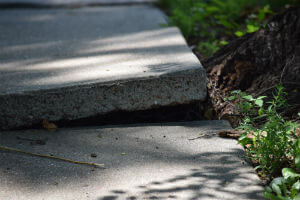Elements of a Premises Liability Claim
 Property owners are legally obligated to provide a hazard-free environment that ensures the safety of those on their property. They can be liable for an injury caused by a dangerous condition located at their home, place of business, other types of buildings or parcels of land.
Property owners are legally obligated to provide a hazard-free environment that ensures the safety of those on their property. They can be liable for an injury caused by a dangerous condition located at their home, place of business, other types of buildings or parcels of land.
If you suffered an injury due to a negligent property owner, you may have a claim to pursue if the following elements apply. The Sacramento premises liability attorneys at the Arnold Law Firm can help you determine if you have a case.
1. The At-Fault Party was in Control of the Property
The first element you must prove in a premises liability claim is that the person who caused your injury owned, occupied or leased the property where your injury occurred. This at-fault party must have been in a position of control and obligated to maintain the property and fix any known hazards on the premises.
Most premises liability cases are clear about who was in control of the property at the time of the accident. However, there is a difference between a property owner and its occupier.
Liability of the Occupying Tenant
An occupying tenant is generally a resident or a commercial business using the property for its own means.
The occupant typically assumes control of the property and is required to provide any necessary maintenance to preserve the property’s condition. This means the occupant is most often liable for an injury that occurs on the property. Occupant liability applies in the situations below:
- If the party is occupying a property with intent to control.
- If the party is the last to occupy an abandoned property with an intent to control.
- When the first two set of conditions do not apply, the party is legally entitled to occupy the property.
Liability of the Property’s Owner
A property owner can be held liable for an injury acquired on a property occupied by a tenant if the incident occurred in an area controlled by the owner. For example, the property’s owner may still assume control of common spaces, such as a hallway, and can be held liable for any injury that occurs in this area.
An owner is also liable if he or she rents out a property with a dangerous condition and neglects to warn the occupant. Although the occupant may be in control of the property, the owner is liable for any injury caused by a previously existing dangerous condition.
Most occupant/owner arrangements are outlined through a lease or legally binding document that states the assumed responsibilities that each party agrees to. If a property owner agrees to provide maintenance on the premises occupied by a tenant, but fails to uphold this arrangement, he or she is liable for any injuries caused by this neglect of responsibility.
2. The Property Owner/Occupant was Negligent in the Maintenance of the Property
Once you have established which party was in control of the property when the injury occurred, you will need to prove the at-fault party was negligent in his or her maintenance of the property. This requires that you prove they failed to uphold their obligation to take reasonable measures to ensure the safety of all people on the property. This can include:
- Causing a hazardous or dangerous condition on the property through a negligent action
- Failing to address or fix any hazards on the property within a reasonable period of time
- Failing to warn about a potential hazard on the property
- Failing to inspect the property for potential hazards
The key to establishing liability in this type of case is demonstrating that the party in control of the property had actual knowledge of the dangerous condition. This includes situations in which the individual should have been aware of the hazard if he or she had taken proper care to inspect and properly maintain the premises.
3. The Controlling Party’s Negligence Directly Caused Your Injury
The last element is that your injury was directly caused by the property owner or occupant’s negligence. To prove this, we gather evidence that shows your injury could not have occurred in any location other than the property mentioned in your claim. This evidence can include:
- Video footage from security cameras located on the premises
- Accident reports
- Photos from the accident scene
- Reports of previous accidents at the same property
- Medical bills for treatment you received to heal your injury
- Witness testimony
- Expert testimony, such a physician who is familiar with your medical history and can testify how your injury will affect you in the future
Contact the Arnold Law Firm’s Premises Liability Attorneys
If you were injured on another’s property because of a dangerous condition that should not have existed, you may be entitled to damages and legal action. The Arnold Law Firm’s injury lawyers can help you file a claim to recover damages for any medical expenses, lost wages, and pain and suffering you endured after your injury.
Through a free, no obligation consultation, we will help you determine if you have a valid premises liability claim against a negligent property owner or occupant. Our legal services are provided on a contingency fee basis, which means you do not pay an upfront charge. We only require payment if we recover compensation for your claim.
Complete our Free Case Evaluation form to get started today.
